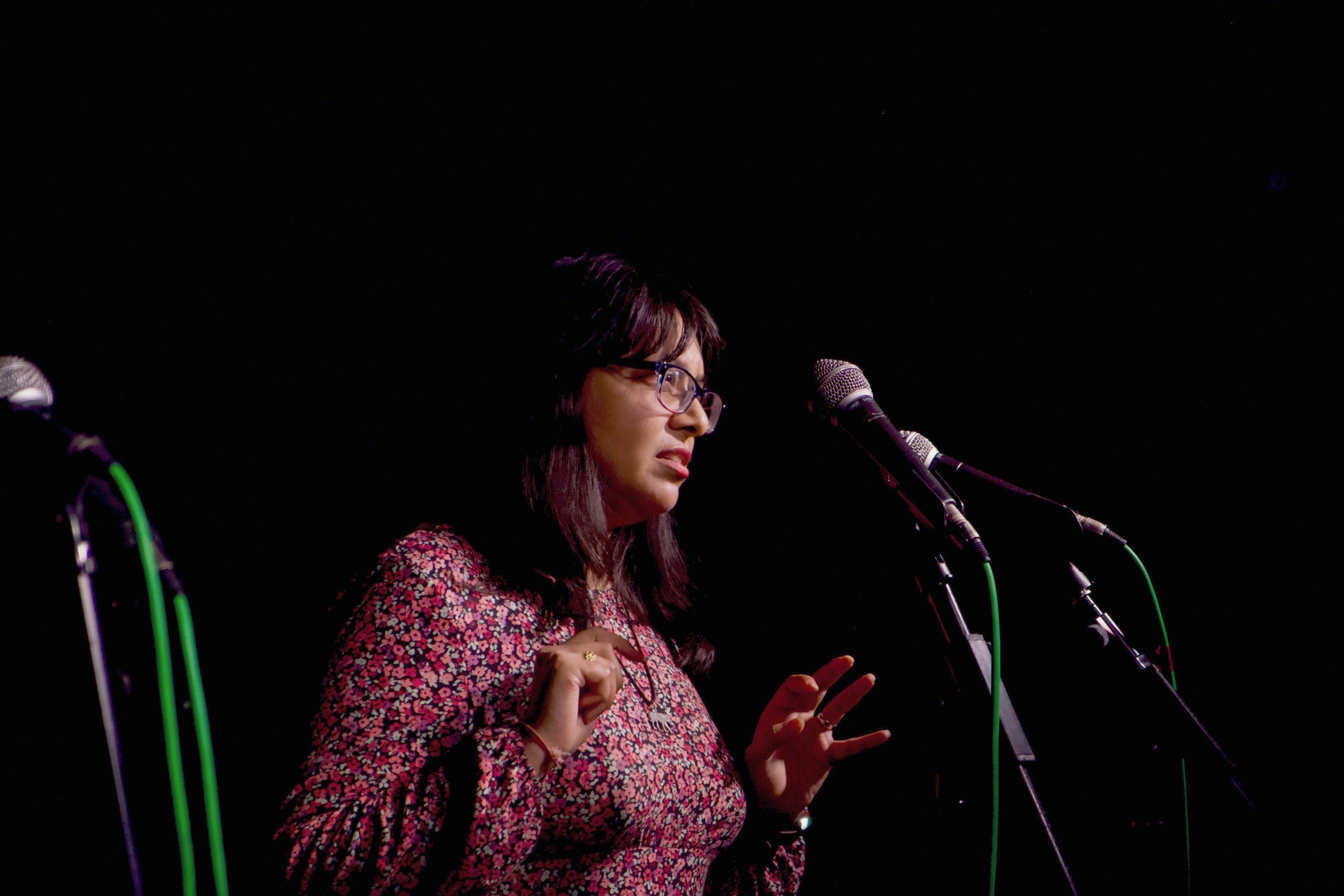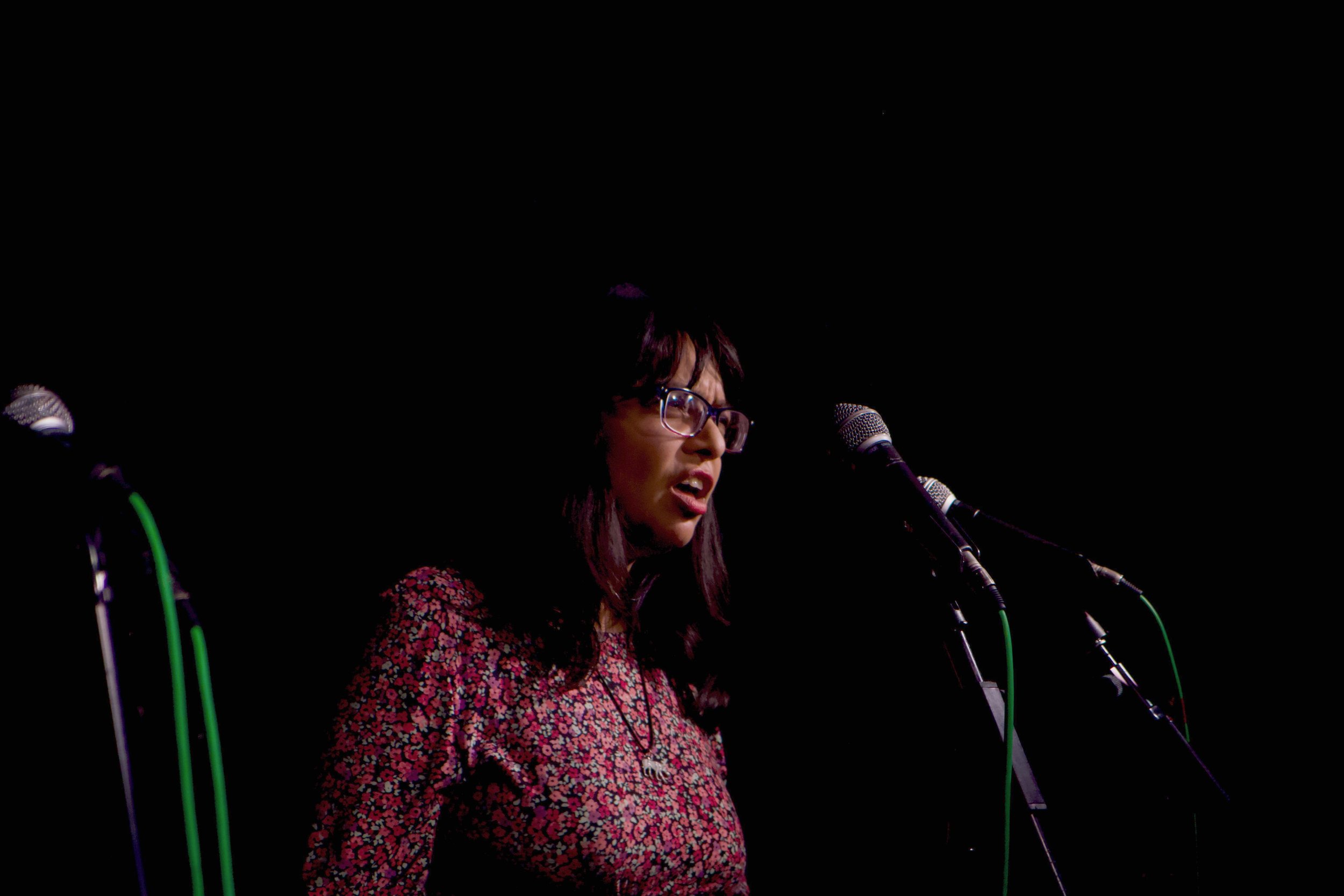In this week’s episode, both our stories are about how we see our bodies and the often complex relationship we have with them.
Part 1: With the looming possibility of a double mastectomy, Connie Henderson considers her options for reconstruction.
Connie Henderson lives in Vancouver, Washington where she practices law with her husband Paul and son Jordan. Her practice focuses on representing people who have been injured as a result of medical negligence, which is probably the only reason she is alive today.
Part 2: Growing up Dhruti Shah struggles to accept her dark body hair.
Dhruti Shah is an award-winning journalist and freelance wordsmith. She's been a local newspaper chief reporter, a BBC journalist, a social storytelling specialist and a lot more. She's worked and studied across the UK, in the US and in Thailand. Her debut book Bear Markets and Beyond: A Bestiary of Business Terms won Short Business Book of the Year at the 2021 Business Book Awards. She's had her poetry and short stories published in various collections. She is also an independent consultant, an accredited relational dynamics coach and has a background in OSINT investigations. She has four global fellowships, including an Ochberg Fellowship with the Dart Centre for Journalism and Trauma. She's a Trustee for the charity The John Schofield Trust and an Advisor to the Museum of Colour.
Episode Transcript
Part 1
I was born into a family of voluptuous women. Not just curvy women, I mean they were like fertility goddesses. They had big wide hips and narrow waists and beautiful breasts. My mom, my grandmas, all my aunts were built like that, and we all assumed that I would be too.
When I hit the point that puberty typically kicks in, there was nothing on the horizon. And they said, “It's okay, honey. You'll be okay. You're just a late bloomer.”
So we waited and we waited, and when I was 18 years old, I was graduating from high school, I was 4‑foot‑10 and I weighed 85 pounds. We had to admit I was not going to bloom. I was not going to be like my mom. Instead, I was going to take after my dad.
Now, my dad's side of the family, I literally was built just like my dad.
My mom was really disappointed, obviously so, but I was actually okay with it because it was the ‘70s and flat was in. We had Peggy Lipton in The Mod Squad, Ali MacGraw in Love Story, and my personal favorite was Twiggy. I cut off all my hair in a short, little pixie cut, put on way too much eye makeup and I was sure that I was a dead ringer for her.
But then everything changed in the ‘80s. Two words, Baywatch. Everybody wanted to either be Pamela Anderson or do Pamela Anderson. All my friends started getting implants. And they'd walk into parties and throw their shirts open and say, “Look what I got.” It was like new tennis shoes or something.
Connie Henderson shares her story at the Jewelbox Theater in Seattle, WA in July, 2022. Photo by Elizar Mercado.
The man I was married to at the time took one look and said, “We need to get some of those.”
Well, I was crushed, because it took me right back to that little girl who never felt like she was enough. But I was also tempted. I really thought about it. They were beautiful. There was no getting around it. And all the guys were staring at them.
But I thought about it and thought about it and, in the end, I decided I just didn't want artificial breasts. They were gorgeous but they weren't real.
So I just consoled myself with the idea that my A-cups were going to stay perky for decades and I got on with my life.
Then one day, years later I noticed a lump in my left breast. I went to my doctor and he said, “It's nothing to worry about,” but I did not stop worrying. He was right. I'd always had fibrocystic breasts but this lump just felt different.
And for six months, I went back and he wouldn't order a mammogram. He said, “You're just being paranoid. It's not medically necessary and your insurance won't pay for it.”
I lived in a small town at the time and I just walked into the radiologist's office and told him what was going on and I wrote a check for a mammogram so I could confirm that this lump was nothing to worry about.
After the mammogram came an ultrasound and then a biopsy. And then I got a call telling me that I had breast cancer.
I was just in shock. I kept saying, “This cannot be happening. I can't have breast cancer. I don't even have breasts.”
But anytime you get a diagnosis like that, it takes on a life of its own and you find yourself in a whirlwind of medical appointments.
The first surgeon I went to was a neighbor of mine and she recommended aggressive chemotherapy, radiation and double mastectomies. She said there's no reason to do reconstruction because, at our age, we don't need breasts. We were 50.
By this time I was single and in a relationship with a great guy, Paul. I was not ready to accept what she was telling me.
Connie Henderson shares her story at the Jewelbox Theater in Seattle, WA in July, 2022. Photo by Elizar Mercado.
She said, “You just need time to get used to the idea. Call me when you're ready to schedule the surgeries.” And she handed me a basket with a big pink bow on it and walked me out the door.
As I sat in my car alone, trying to get up the nerve to call Paul and give him the bad news, I started going through this basket. There was a pink teddy bear and pink fuzzy slippers, chamomile tea, and on the bottom I came to a brochure of wigs and scarves. That was when it hit me. I was terrified.
Paul was thinking a lot more clearly than I was at this point. We decided we needed to get a second opinion and the second surgeon I talked to was a lot more reassuring.
She said, “You're really lucky you're small breasted. You found it early. We probably will not have to do that.”
And the plan that evolved was we would go into the surgery and she would check my lymph nodes on the left side. If they were negative, she would do a lumpectomy. I'd follow up with radiation and everything would be fine. If they were positive, though, that meant the cancer had spread.
If that is what happened, she would do bilateral mastectomies, skin‑saving mastectomies, they call them, and go straight to reconstruction. And after all that was done, I'd need a lot more treatment.
So to get ready for the second possibility, I had some decisions to make. And they gave me a catalog to go shopping for my new potential breasts.
Connie Henderson on her trip to Mexico with husband Paul. Photo courtesy of Connie Henderson.
As Paul and I are looking through this catalog, a few things started to become clear. The first is I was not going to come out of this looking the same because they don't make double‑A cup implants.
The second is Paul may not have been entirely true when he told me he was an ass man.
And the third is I, apparently, had never given up the idea of having big breasts. Because we're looking through this catalog, at before‑and‑after pictures of bigger and bigger sizes and, in the beginning, it was like, “Oh, those are nice.” Pretty soon it was, “Wow!.” And then we got to, “Holy cow!” And we were like getting into it. I started seeing things like go big or go home.
We booked a trip to Mexico, to a topless resort under the ruse that we were taking the girls on what might be their last vacation. In reality, we've thought that a topless resort would be a really good place to do field research on fake boobs. And we were right.
We spent a week laying on the beach, hiding behind our sunglasses, staring at women's breasts. We tried to be kind of subtle about it. Paul would lean over and say things like, “Incoming at nine o'clock.” And then we’d do like thumbs up, thumbs down. Sometimes his thumbs went way up.
By the end of the week, I had it all figured out. I had my heart set on sloped, saline implants in a size that would generously fill a D‑cup bra. And I was going to have them add nipples. They just gather up the skin and you can get a tattoo, any size, any color. Because I thought maybe someone would think they were real. I don't know. I was excited.
I hadn't told my mom about the diagnosis. I didn't want her to worry until I knew what I was dealing with. As I'm making these plans, all I can think is, “My mom is going to be so surprised.”
Connie Henderson shares her story at the Jewelbox Theater in Seattle, WA in July, 2022. Photo by Elizar Mercado.
But when I went to my pre‑op appointment and told the surgeon my plan, she stepped back, looked me up and down and said totally deadpan, “You don't have enough epidermal tissue for implants that size.” She said, “Sometimes we can do transplants from the abdomen or the buttocks,” but I was still built like my dad. And she said, “You don't give us anything to work with.”
So we scaled back to what they call a big B, which was still drastically bigger than I ever thought I'd be in my life.
The morning of the surgery, my anxiety was just through the roof. I didn't know if I was afraid or excited. I knew when I woke up, I would either have a small bandage and a really good prognosis or I'd have these big, beautiful breasts and a rough road ahead treating the cancer that had spread.
And as they put me under, I seriously didn't know what I was hoping for. But I don't have to tell you.
I woke up looking exactly like I always looked and I was so relieved. The moment of truth came when they brought Paul back to see me and there wasn't a hint of disappointment on his face. That's when I knew he was a keeper.
But I'm really aware that I was lucky. I was one of the lucky ones. I have friends whose diagnosis did not come in time. And there isn't a day that I'm not grateful for the way I'm built.
Thanks, Dad.
Part 2
I'm 10 years old and I've gone to the local public pool with the rest of my schoolmates and we're going to learn swimming. So we're learning strokes like backstroke, breaststroke, the one with the frog legs and more.
We're there at the pool, at the edge of the pool and my hair, which is usually long past my waist, is bundled up into a swimming cap. And I've got this patterned swimming costume on.
Dhruti Shah shares her story at Aces and Eights Saloon Bar in London, UK in November, 2022. Photo by Richard Mukuze.
The pool is cool and blue and it smells of chlorine. I know that when I shrug my towel off, I'm going to get cold because my Kenyan‑Indian part can only deal with the body temperature rather than the English element. But it is what it is.
So I'm standing there, edge of the pool. There's a boy's standing next to me. He's average, Caucasian. I can't remember his name. He's an alleged nose picker. You know the drill. He does his thing, I'll do mine. It's all good.
Anyway, he turns around and he looks at me. Then in as loud as a voice as a 10‑year‑old can have, he says, “Dhruti, you're really hairy.”
There's no time to think. The teacher blows the whistle and we all have to jump in. Rather than focus on the stroke, like everybody else, I'm like, “Why am I so much hairier than everybody else in this class, including the boys?”
I look over at him and he's all right. He's just having a bit of fun. He doesn't care, but I do.
Then we're back in the changing rooms and I'm casting these furtive glances at these dark emerging hairs that are all on my body and I'm wondering what am I supposed to do with this? I don't want to go back home and tell my family. I just want to hide.
But we live in a small, tiny house and there's nowhere to hide, so I do the next best thing. I go upstairs and I flop on my mattress and I look over at my bookshelf and I pick up the first book that comes to hand. It's White Fang by Jack London.
Now, this is a coming‑of‑age story for a high content wolf dog. I've been given this book two years previously and I'd fallen in love with it. But this time, there was something different. I just couldn’t put it down.
I took it downstairs to dinner. I sneaked it back upstairs past my mum and I stayed up all night using the street light outside my box room bedroom window to devour page after page after page.
I identify with that wolf dog, that high content wolf dog. He's an outsider, so am I. I've been brought up in the Jain Faith, which there's not many of us around anyway in the world. I'm vegetarian. I've been born vegetarian. It's way before it's fashionable. And I'm brown in a very white‑centric world. So I already feel quite different.
And I read this book and I think, “Ah, that White Fang, he knows what to do.”
In a very cruel human world, White Fang uses his cunning. He uses his smarts in order to navigate what's going on.
“I'm going to be like White Fang. I'm going to be known as the girl who reads rather than the girl with a hairy body. It's all good.”
Then at that moment, though, in the pool, where I've clearly realized I'm objectified. I’d read that word. It's good.
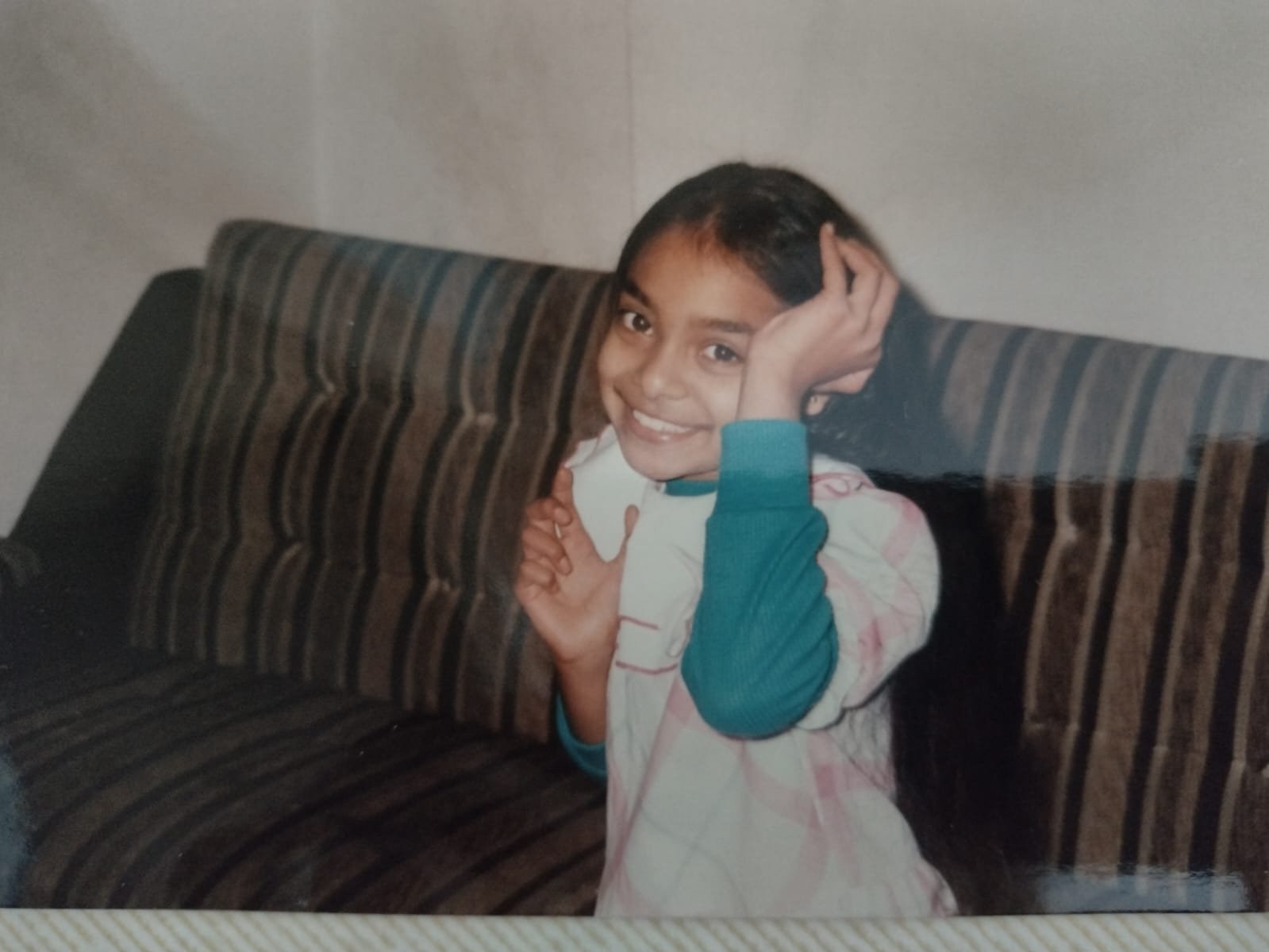

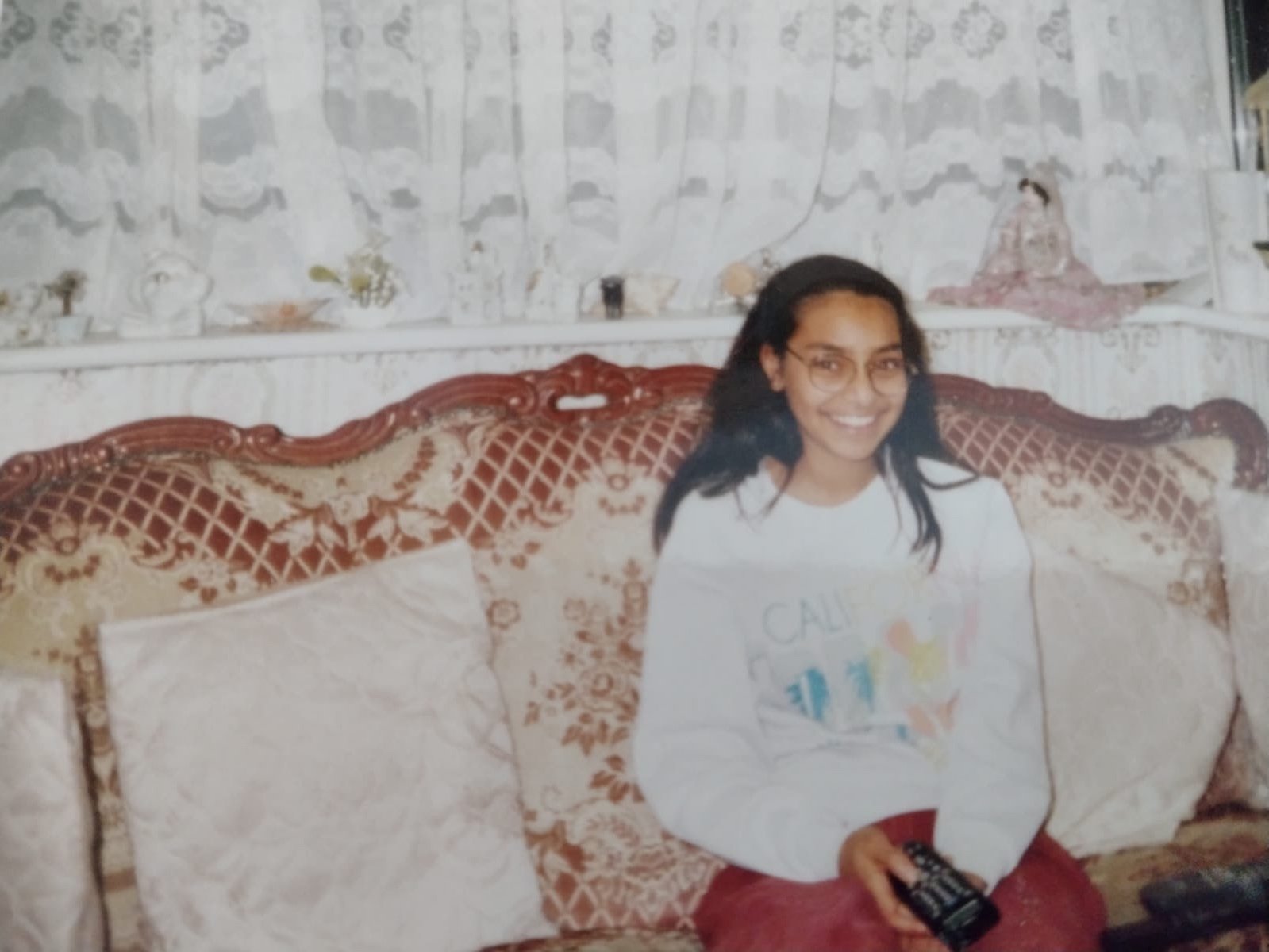
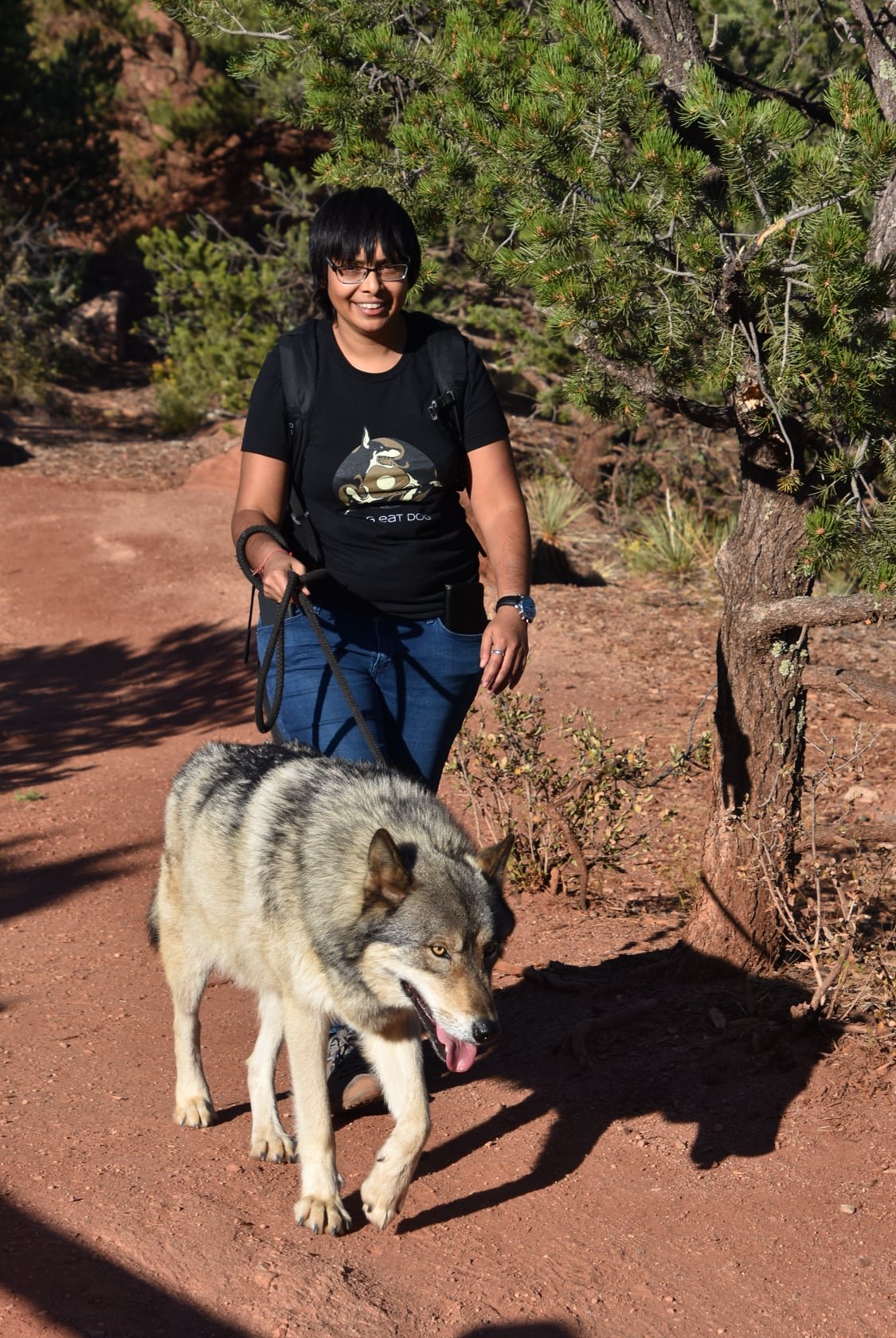
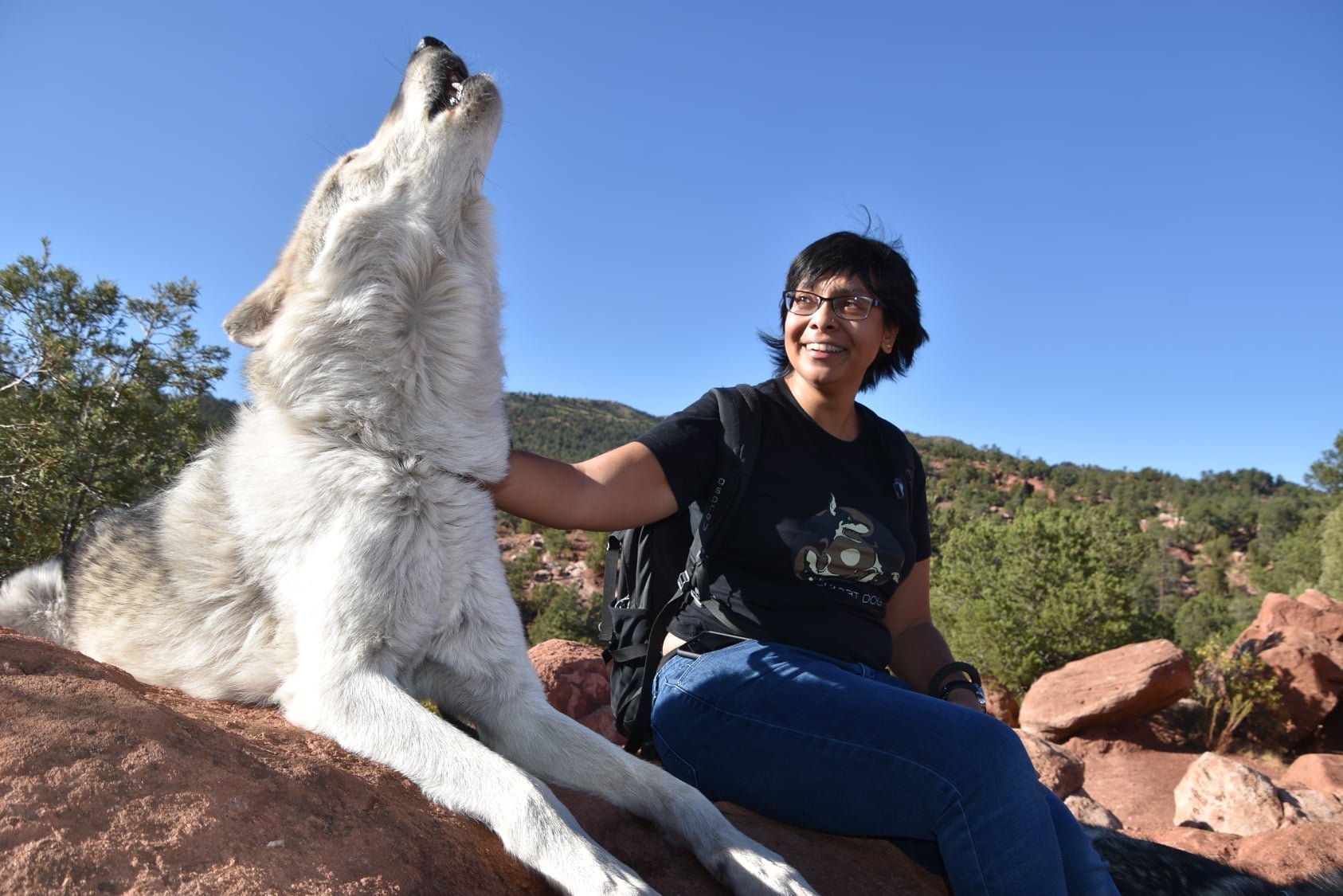
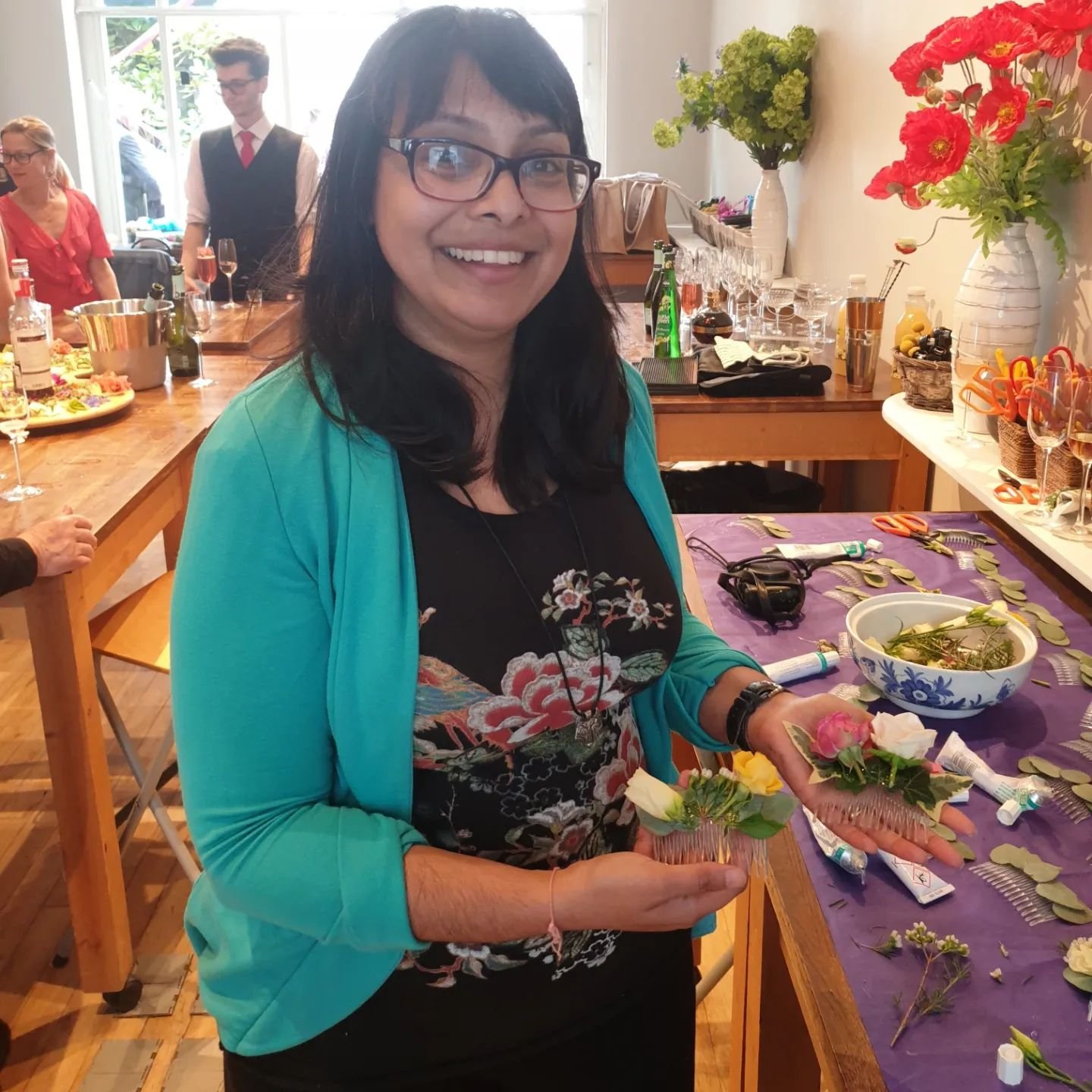
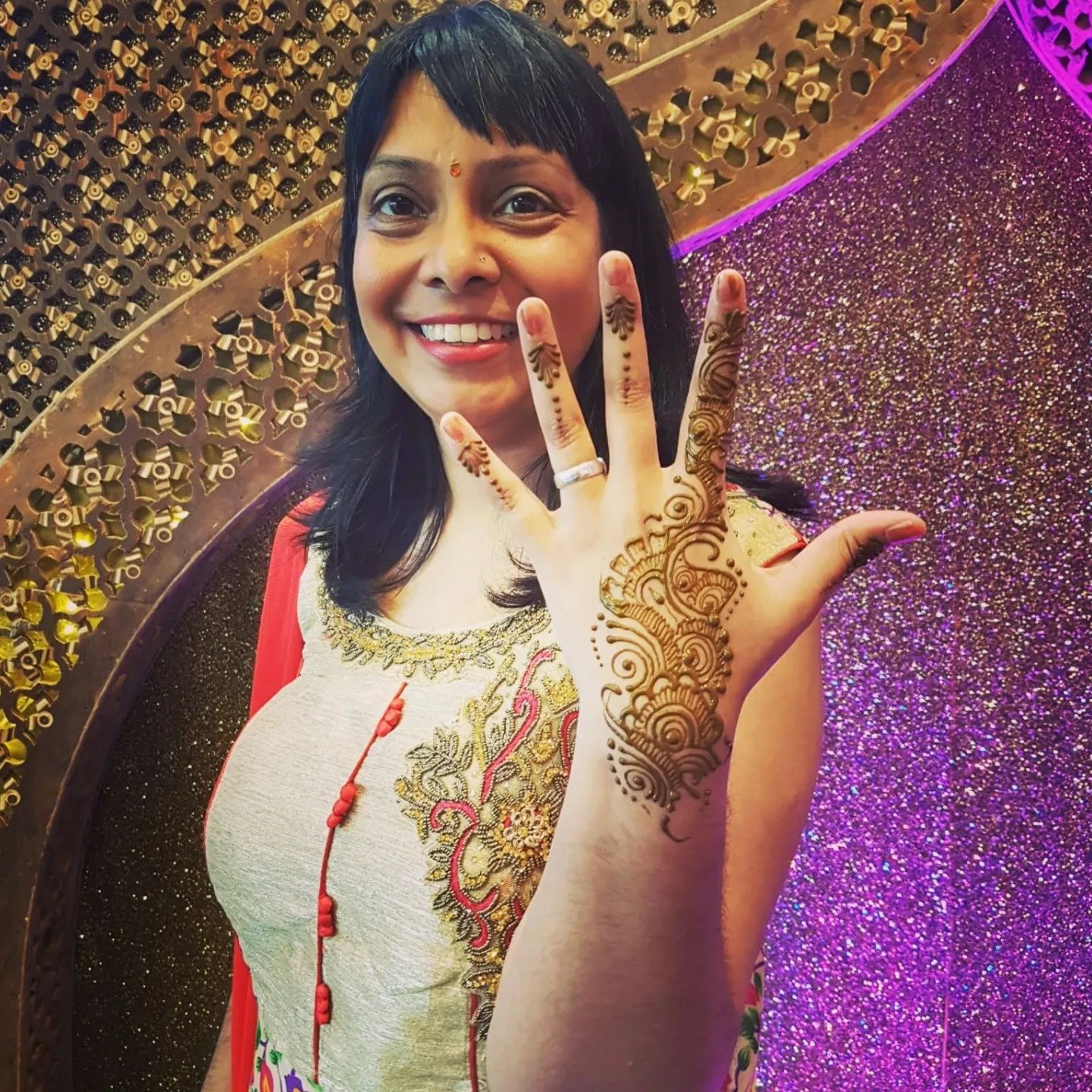
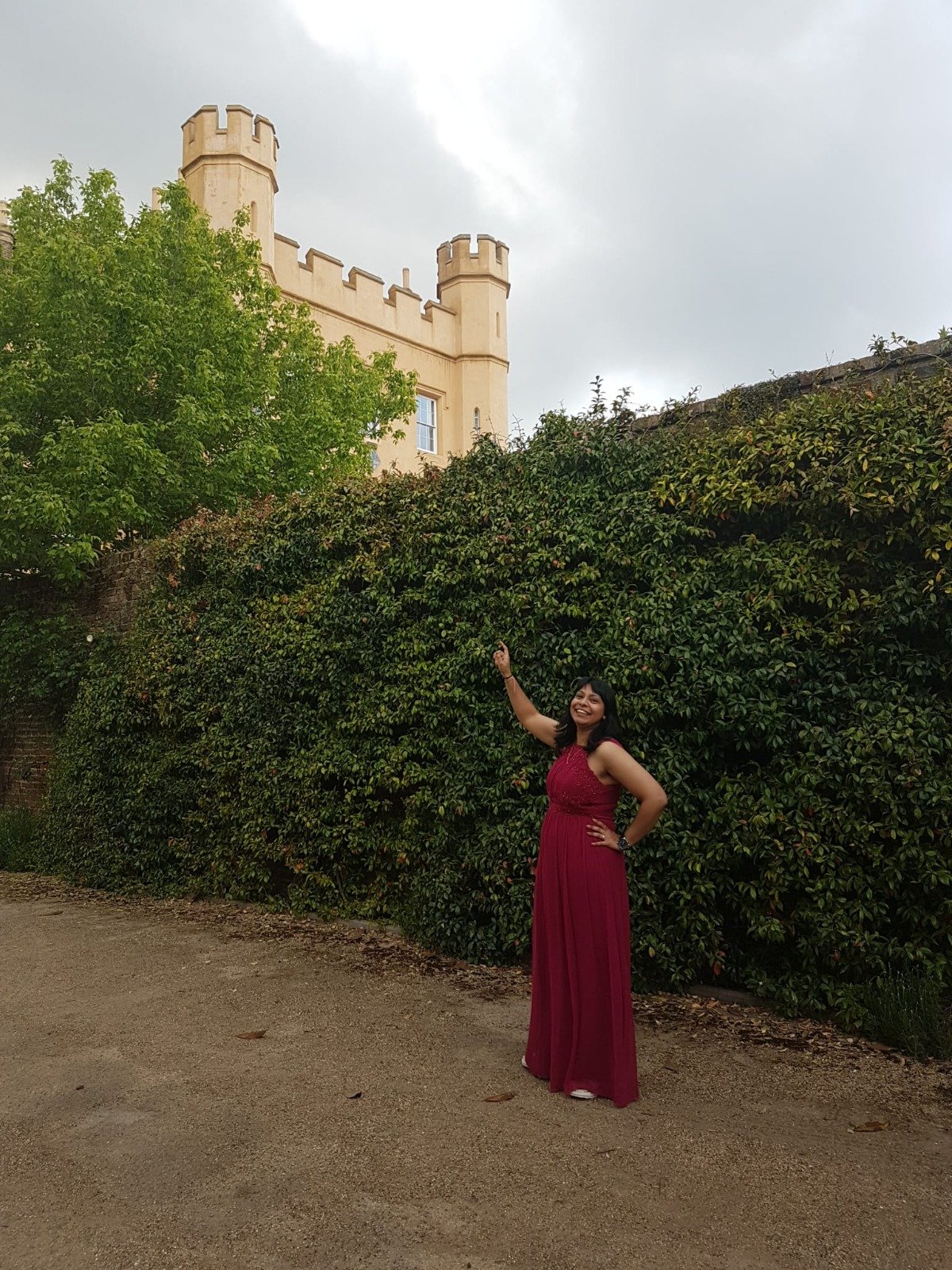
I then moved from primary school to secondary school. I moved from wearing Teenage Mutant Ninja Turtle jeans and shorts to MC Hammer baggy trousers and leggings. They go with my uniform of baggy t‑shirts. And whenever I'm wearing Indian clothes, which can be super, super bling, luckily it's not too revealing. So all that hair, it remains hidden.
But I spend a lot of my teens wandering around my part of London looking for a cheap deal at the Indian beauty shops that they have, trying to get my eyebrows threaded, my upper lip waxed, my arm hairs removed somehow, my leg hairs, whatever can be removed removed.
But I'm not alone in this. It seems like every single people in my girls’ school feel duty bound to be smooth. I find it really weird because some of them don't have any hair at all, it seems, but there you go.
But I seem to have the most resilient hair in the world. Like Mother Nature and genetics and puberty just go wild. So whereas it seems like everybody else seems to glow up with this soft, fine fuzz known as vellus, I get dark, wiry terminal hairs everywhere. And it's really, really frustrating. Like waxing, shaving, IPL, laser, sugaring, this thing that you do with sandpapery thing mitts I don't understand. It doesn't matter what I do. It comes back. It's bloody annoying, especially when I keep accidentally cutting myself.
And there comes a point, fast forward a few years, I'm in my 20s. I finally got a job. It doesn't pay very well, but I spend quite a lot of the money that I do have on trying to remove hair. The latest bout of laser has failed again and it's not fair. My friends don't have to do this and, to be perfectly frank, I'm having a bit of a pity party, being miserable.
Dhruti Shah shares her story at Aces and Eights Saloon Bar in London, UK in November, 2022. Photo by Richard Mukuze.
I'm back at home, back in that same box room bedroom. Things have changed. It's purple rather than blue now. But what can I do?
So I turn around, pick up a book from my bookshelf and it's that same childhood copy of White Fang and I fall back in love again.
In White Fang hair is actually mentioned quite a lot. White Fang uses his hair. It bristles to make him look bigger. His pelage, his fur coat it's gray compared to his brothers and sisters who have red hair. So I'm reading this and the journalist instinct kicks in.
“Whoa, I gotta go and read more about this wolf hair. What's going on here?”
Did you know that wolves have guard hair and it's what gives them the color that they are? So, black, brown, gray, red, white, but it's also quite oily. It's made up of these hollow shafts. What it does is it protects the undercoat. That's what also regulates the temperature of the wolf. Cool, right? Or should I say warm.
And I go back and I'm reading White Fang again and start looking at my androgenic hairs and it's, it's— wait. Hold on a minute. So the wolves have hair for a reason and I have hair. And when I'm cold, the hair rises and it traps the warmth. And when I'm afraid, the goosebumps make the hairs rise, so it's there to protect me. So why am I destroying the hair? Why on Earth am I attacking my own body? What is going on here? This is ridiculous.
I mean, you've never seen a wolf trying to shave. And shedding its winter coat for temperature regulation purposes is not the same.
So the logic wins out. I'm going to leave my arm hair alone. I'm fed up of the scars that keep coming back anyway. Nope, I'm done.
The thing is, people still do point out, “Oh, that's a bit gross,” and I'm like, “I'm really sorry if it bothers you but it doesn't bother me.” It's a bit awkward but then it passes.
Unfortunately, society wins when it comes to the rest of my hair. My legs, if they're on show then I'll probably shave. But it's because I don't want to be known at work as the woman with the hairy body. I want to be known for my substance. Hairy arms I can just about cope with. It's a shame, isn't it?
But there comes a point the pandemic happens. Like a lot of other people, I get sent home from work. The news agenda is relentless. Things keep changing minute after minute after minute. I volunteer to sign up for a team, a small team. And we focus on telling the stories of victim stories, of death stories, of sometimes survivor stories, behind the stats that the government keeps reeling out day after day after day as COVID spreads and spreads and spreads.
And I'm at home in that same box room bedroom. For 10 hours I'll be calling people around the world, speaking to them about their loved ones lost unexpectedly, of obituaries and tributes, of stories of injustice and grief, of legacies, of lives very much full but very much cut short. And it makes me think about my own life in the situation that I'm in and about where I want to focus my energies on and letting go of needless, needless things.
And, like some other people, I stopped grooming. I mean I still wash. I still clean. I still just about smell all right. But it's at first a little bit of an experiment. And I'll be honest, sometimes when I'm in the bath or I'm wearing shorts, even I'm a little bit grossed out. I have the ick, because seeing that hair grow and grow and grow without knowing when the end point is, it's weird. It doesn't look feminine. It doesn't look right.
But we're mainly on Zoom anyway so nobody sees. And at home, my family they're like, “Do whatever you need to do,” so there's no fear of embarrassment there.
Dhruti Shah shares her story at Aces and Eights Saloon Bar in London, UK in November, 2022. Photo by Richard Mukuze.
It's at this point I learned that, actually, Asian hair grows much faster than our Caucasian counterparts, so it works out. Sometimes, I sit and watch some films of animals and nature coming back. As people are going, reverting back in lockdown and I think maybe this is it. This is the inner wolf taking over. And also maybe this is where rumors of werewolves came about, you know, in plague days.
But there comes a point when I'm wearing this shortest skirt, that just past up my knees, and it's got flowers on it and it's got pockets. I know. It's brilliant. And I look down at my knees because, for some reason, the hair seemed to congregate around the knees. They're really fascinating. They're long and tapered and soft but they're really much around the knees.
And I think, “Should I get changed? I want to go for this walk, a Vitamin D walk. Have a stretch.”
I look at my hairy knees and I think, “You know what? I can't be bothered. Screw it. I'm gonna go and, if anyone says anything, they can say something.” I live in a pretty rough area.
And I put my keys and I put my money into my pocket, I open the door and head outside. For the first time in many, many years, my hairy knees get to see the sun.
I go for a walk only around the block, so about 10 or 20 minutes. I know that it feels a little bit like a tickle. It feels really, really good.
Thank you.




